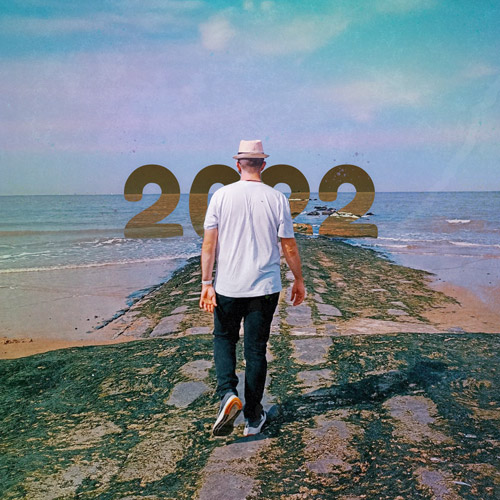07 Dec 2025

Click here to listen to the EP! 2022 is an EP inspired by sketches I recorded during that year in Belgium.
The challenge for this month’s EP was to bounce all tracks via cassette tapes before mastering. I failed. Kind of.
The resulting audio was very interesting, with some artifacts here and there, a bit of tape wobble, warmer audio, and a bit of harmonic saturation, everything I hoped for… EXCEPT for the fact that not only was there tape hiss (expected) but also a weird mechanical noise that I couldn’t get rid of. Oh, and the playback speed was faster as well, I could have digitally slowed it down to match but that also introduces digital artifacts.
That’s the downside of using an old machine, and unfortunately sending it for repairs (or learning how to do this myself) would probably take a while, and we have to move onto the next EP!
So I’ll be including both the standard version as well as the tape one in this release (on Gumroad) and on all other streaming services I’ll just include the standard version (non-tape).
Thanks for listening and I hope you enjoy it!
Sign up to the newsletter to receive new album updates:
And feel free to follow @lemiffe if you enjoy the album:
Spotify
09 Nov 2025

Click here to listen to the EP! 2011 is an EP inspired by sketches I recorded during that year in Mexico and Scotland.
The challenge for this month’s EP was to compose all the tracks using a maximum of 4 channels in the DAW.
This often meant using the vocal channel (during spaces) to add an additional solo guitar or other instruments.
I did allow myself to use stereo channels to bounce down double-tracked guitars into a single channel (or vocals in some cases),
but that was the only rule I somewhat ‘bent’.
Thanks for listening and I hope you enjoy it!
Sign up to the newsletter to receive new album updates:
And feel free to follow @lemiffe if you enjoy the album:
Spotify
12 Oct 2025

Click here to listen to the EP! 2020 is an EP inspired by sketches I recorded during that year in Belgium. The challenge for this month’s EP was to compose all the songs with piano first.
It ended up being twice as challenging as I had knee surgery and had to record most of it from bed, but in the end it came out better than I expected. One of the things I noticed is the style of composing depends quite a lot on what instrument you start with.
Thanks for listening and I hope you enjoy it!
Sign up to the newsletter to receive new album updates:
And feel free to follow @lemiffe if you enjoy the album:
Spotify
09 Sep 2025

Click here to listen to the EP! 2012 is an EP inspired by sketches I recorded during that year in Scotland and Mexico. The challenge for this month’s EP was to use only vocals, no instruments (real or virtual); it was a lot of fun but very exhausting, yet I allowed myself the use of plenty of effects to achieve a fuller and more interesting soundscape.
The end result is quite weird, even by my standards, incorporating elements of doo-wop, EDM, hip-hop, alternative and indie. Having these monthly challenges has certainly pushed me beyond my comfort zone, in a good way.
Thanks for listening and I hope you enjoy it!
Sign up to the newsletter to receive new album updates:
And feel free to follow @lemiffe if you enjoy the album:
Spotify
10 Aug 2025

Click here to listen to the EP! 2015 is an EP inspired by sketches I recorded in 2015 in Belgium and the US. The challenge for this month’s EP was to use a different DAW (digital audio workstation) than I am used to, which was tougher than I expected.
After trying out a few free DAWs I realised I’d settle for GarageBand on the mac. It took me 3 weeks just to get into the flow, but once I got into it I noticed my usual way of working wouldn’t work; somehow the program you choose to work in can shape the work you produce.
The end result was a “rock demo tape” style of EP. I recorded in longer takes with less comping (recording the same part over and over), instead relying on more practicing beforehand and less recording, as it could be a bit more tedious to do a lot of splicing and adjusting.
Thanks for listening and I hope you enjoy it!
Sign up to the newsletter to receive new album updates:
And feel free to follow @lemiffe if you enjoy the album:
Spotify




